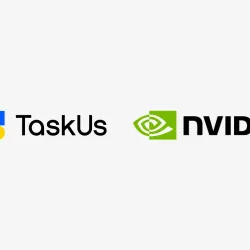Stories
All Hail: The Customer is King and Deserves a World Class Experience
Why the Consumer Wears the Crown
Before connecting with customers, it’s important to understand why that connection is key.
When we first caught wind of the oncoming invasion from the North, we were told that these tech companies were not a threat to the industry, and had little experience in deploying content and playing within the traditional Hollywood system. Within a year, the buyer market exploded and the agents were encouraged to build relationships with these new Silicon Valley entrants as fast as possible.
The digital revolution caused an explosion in the quantity of premium content. Suddenly, HBO and Showtime didn’t hold the keys to this treasure trove of premium anymore. Any entertainment/tech company with money to spend could gobble up content, put it on their platform, and add it to their library.
This was when the Crown passed from the Hollywood Studios and TV networks and affixed itself to the new power in the realm, content. With content (and its creators) as King, the paradigm convulsed as the marketplace blew wide open to anyone with the money to purchase it and host an audience that could consume it.
Amazon, Netflix, and the tech giants outbid competitors for the juiciest stories told by the hottest storytellers with little competition from the traditional buyers. The amassed customer-base from their primary tech business models provided the net return on the high price tags of films and tv shows. This supplied them the marketing material they needed to attract even more consumers to their platforms.
In an effort to compete, the risk-averse traditional buyers of Old Hollywood bought what they could from the scrap heap, and everyone else followed suit. King Content sat comfortably on the throne, its rise to power complete.
Content is consumed on every device across every channel. Shouldn’t support be just as readily available?
The Tremors of Technology
These technology companies leaped so far ahead of the traditional Hollywood incumbents that an existential crisis pervaded these legacy businesses.
With their massive technology infrastructure and capabilities, the big streamers could utilize AI and machine learning (ML) to understand their customers' tastes and behaviors. From this, they could craft content strategies on an individual or aggregate basis to provide the highest return on investment.
The legacy Hollywood players had finite technology capabilities and experience, if any, and were on the verge of becoming non-relevant. However, they did have one asset the big streamers did not have…yet: their content libraries.
For the past 100+ years, the traditional players had shaped and sculpted the pop culture of America and the world with their entertainment properties. In many cases, they had synergized these properties to build vast businesses in the CPG industry (Disney and Warner Bros) and travel/tourism industry (Disney and Universal). These successful affiliate businesses provided the cash necessary to stay off life support in the short term, but what about the long term?
There was only one way for the traditional players to compete against these tech giants from the North with deep pockets and next-generation digital capabilities: form an alliance (aka, consolidate).
Earlier this year, the Motion Picture Association of America (MPAA) reported on the rapid growth of streaming video, which grew to 613 million subscriptions worldwide, a 27% increase from 2017.
In order for a streaming service to both differentiate itself from the competition and meet the expectations of consumers, it will need to invest heavily in customer experience and support.
Most importantly, customer support should inform and provide insights into the product, service, or platform to ensure continued adoption. This will work to result in increased usership or viewership.

Omnichannel Digital Support
Content is consumed on every device across every channel. Shouldn’t support be just as readily available? Telephony, while still vital––especially for older generations––must be complemented by omnichannel digital support. Chat and email are key digital channels, but what about social media support? That’s where people are venting, and promoting. Imagine the power of being able to thank a customer wholeheartedly for complimenting your product or service, and being able to offer them something in return. That back and forth interaction is how real relationships develop. And if these good interactions are publicized through a customer’s network too – well that’s gravy on top.
Asynchronous chat, where a conversation with a customer is ongoing, is one format that is gaining steam across the industry to provide that omnichannel, singular customer experience.
In-app messaging is also becoming increasingly popular. Having the capability to chat a user or viewer while they are experiencing problems will be essential to standing out from the competition from a customer experience standpoint.
A Technology-Driven Approach
Robust technology that is able to monitor feedback stemming from a concierge level of support is crucial to continuous improvement and innovation.
AI and ML strategies provide businesses ways to ingest and digest feedback that will lead to their continuous improvement in an ultra-competitive industry.
When bots can quickly handle customers’ frequently asked questions, it takes a significant workload off of the frontline staff who are, as a result, more available to handle in-depth issues with customers.
AI and ML improve conditions for people inside and outside the company. These types of technologies empower both reactive and proactive customer support experiences and are in line with the expectations of today’s consumers.
Entertainment companies that interact directly with consumers have a major incentive to capture the human insight contained in customer questions and feedback.
Concierge-Level Support Is A Necessity, Not a Luxury
In the end, the customer service provided by media and entertainment companies must be unique and supported by technology.
The support levels should be proactive and reinforced with an ongoing, personal relationship with every customer. That means being able to predict issues a customer may be having and proactively contacting and fixing them.
However, it also means reaching out to them when there isn’t a problem. For example, notifying them about a new promotion or how they can actively save money BEFORE their contract is up.
Most importantly, customer support should inform and provide insights into the product, service, or platform to ensure continued adoption. This will work to result in increased usership or viewership.
A concierge-level of support will stem churn and build an army of promoters that will continuously grow the customer base.
Good service, like good content, is the only way media and entertainment companies will be able to take care of their customers, protect their brand, and enhance their businesses.
Do you want to avoid being overthrown by your customers? Send me a note and let's chat about how you can provide a royal customer experience.
References

We exist to empower people to deliver Ridiculously Good innovation to the world’s best companies.
Services







